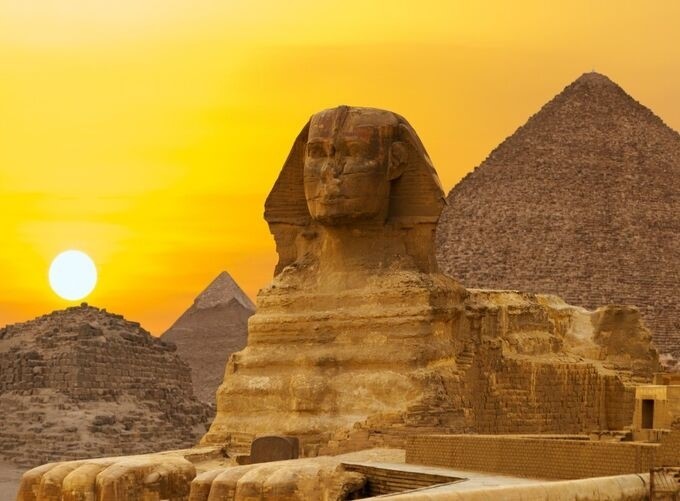
Can You Visit Jordan and Egypt Together?
Traveling to Jordan and Egypt offers a unique opportunity to explore two of the most historically rich and culturally vibrant countries in the Middle East. With stunning landscapes, ancient ruins, and a wealth of experiences, combining these two destinations into one unforgettable trip is not only possible but highly rewarding. This guide will help you navigate the logistics, must-see attractions, and tips for planning a memorable tour to Jordan and Egypt.
Introduction Jordan and Egypt
Jordan and Egypt share a deep historical connection, with their landscapes telling stories of ancient civilizations, majestic architecture, and vibrant cultures. While Jordan is famous for its archaeological treasures like Petra and the Dead Sea, Egypt boasts the legendary pyramids and the timeless Nile River. Together, these countries create an incredible travel experience that intertwines history, adventure, and stunning scenery.
Why Combine Jordan and Egypt?
2.1 Rich Cultural Heritage in Jordan and Egypt
Both Jordan and Egypt are home to some of the world's most significant archaeological sites. In Jordan, you can explore the rock-cut architecture of Petra, a UNESCO World Heritage site, and the ancient city of Jerash. In Egypt, the Pyramids of Giza and the temples of Luxor showcase the grandeur of the Pharaonic era. Traveling to both countries allows you to delve into the rich tapestry of history and culture that defines the region.
2.2 Diverse Landscapes
Jordan and Egypt offer diverse landscapes that range from deserts and mountains to lush valleys and coastal areas. The beauty of Wadi Rum in Jordan contrasts sharply with the Nile's fertility in Egypt. This geographical diversity creates a multitude of outdoor activities, from hiking and camel trekking to cruising along the Nile.
2.3 Culinary Delights
Both countries boast delicious and varied cuisines, reflecting their rich cultural heritage. In Jordan, savor traditional dishes like mansaf (lamb cooked in yogurt sauce) and falafel, while in Egypt, indulge in koshari (a mix of rice, pasta, and lentils) and fresh seafood from the Mediterranean coast. Combining your visit will allow you to enjoy the best of both culinary worlds.
Travel Logistics in Jordan and Egypt: Planning Your Journey
3.1 Best Time to Visit Egypt and Jordan
The ideal times to visit Jordan and Egypt are during the spring (March to May) and autumn (September to November) months when temperatures are mild, and tourist crowds are less dense. Summers can be scorching, particularly in Egypt, while winters can be chilly in some areas of Jordan.
3.2 Entry Requirements for Egypt and Jordan
Jordan: Many nationalities can enter Jordan without a visa for short stays (up to 30 days). However, it is essential to check the latest visa regulations before your trip.
Egypt: Most visitors will require a visa to enter Egypt, which can be obtained online or upon arrival at the airport. Verify the latest entry requirements based on your nationality.
3.3 Flight Options
There are several airlines that operate flights between major cities in Jordan (such as Amman) and Egypt (like Cairo). Popular routes include:
- Amman to Cairo
- Amman to Luxor
- Amman to Sharm El Sheikh
Booking flights in advance can help you secure the best prices and convenient schedules.
Suggested Itinerary for a Combined Trip
Here’s a suggested itinerary for a 10-day trip that combines the highlights of Jordan and Egypt:
Day 1-3: Amman and Petra, Jordan
Day 1: Arrival in Amman
- Arrive in Amman, Jordan’s capital. Check into your hotel and relax.
- Explore the vibrant downtown area, visiting the Roman Theatre and the Citadel.
- Enjoy dinner at a local restaurant, trying traditional Jordanian dishes.
Day 2: Jerash and Ajloun
- Take a day trip to Jerash, one of the best-preserved Roman cities in the world. Explore its ancient ruins, including temples, theaters, and colonnaded streets.
- Visit Ajloun Castle, an impressive fortress with stunning views of the surrounding landscape.
- Return to Amman for the night.
Day 3: Petra
- Depart early for Petra, a UNESCO World Heritage site. Spend the day exploring this ancient city carved into the rock.
- Walk through the Siq, the narrow gorge leading to the Treasury, and discover the various tombs and temples.
- Spend the night in a hotel near Petra.
Day 4-5: Wadi Rum and Aqaba, Jordan
Day 4: Wadi Rum
- Travel to Wadi Rum, a stunning desert landscape known for its dramatic sandstone mountains and vast open spaces.
- Take a jeep tour of the desert, visiting iconic sites like the Burdah Rock Bridge and Lawrence’s Spring.
- Spend the night in a Bedouin camp, enjoying traditional dinner and stargazing.
Day 5: Aqaba
- Head to Aqaba, Jordan’s only coastal city on the Red Sea.
- Spend the day relaxing on the beach, snorkeling, or diving in the vibrant coral reefs.
- Enjoy fresh seafood for dinner by the waterfront.
Day 6-7: Cairo, Egypt
Day 6: Travel to Cairo
- Fly from Aqaba to Cairo. Check into your hotel and freshen up.
- Visit the Egyptian Museum to see treasures from ancient Egypt, including the artifacts of Tutankhamun.
- Stroll through the bustling Khan El Khalili bazaar for shopping and local experiences.
Day 7: Giza Plateau
- Spend the day at the Giza Plateau, exploring the Pyramids of Giza and the Sphinx.
- Consider a camel ride around the pyramids for a unique perspective.
- In the evening, enjoy a Sound and Light Show at the Pyramids.

Day 8-9: Luxor, Egypt
Day 8: Travel to Luxor
- Fly from Cairo to Luxor and check into your hotel.
- Visit the Karnak Temple Complex, one of the largest religious complexes in the world.
- Explore Luxor Temple, beautifully illuminated at night.
Day 9: Valley of the Kings
- Discover the Valley of the Kings, the burial site of many pharaohs, including Tutankhamun. Visit the royal tombs and learn about ancient burial practices.
- Visit the Temple of Hatshepsut, a stunning mortuary temple dedicated to the only female pharaoh.
- Return to your hotel in Luxor for the night.
Day 10: Departure
- Depending on your flight schedule, you may have some free time for last-minute exploration or shopping in Luxor.
- Fly back to Cairo for your international departure.
Tips for Traveling Between Jordan and Egypt
5.1 Currency and Payments
Jordan: The currency is the Jordanian Dinar (JOD). Credit cards are widely accepted, but having cash for smaller purchases is advisable.
Egypt: The currency is the Egyptian Pound (EGP). While credit cards are accepted in major hotels and restaurants, cash is often needed for markets and smaller establishments.
5.2 Language
- In Jordan, Arabic is the official language, but English is commonly spoken in tourist areas.
- In Egypt, Arabic is the official language, with English widely understood in tourist destinations.
5.3 Cultural Considerations
Respect local customs and dress codes, especially when visiting religious sites. Modest clothing is recommended in both countries, particularly in Egypt.
Must-See Attractions Egypt and Jordan
6.1 Jordan
Petra: The ancient city known for its rock-cut architecture and water conduit system, often referred to as the “Rose City.”
Wadi Rum: A protected desert wilderness featuring stunning landscapes, traditional Bedouin culture, and adventure opportunities.
Jerash: An ancient Roman city known for its impressive ruins, including theaters, temples, and colonnaded streets.
6.2 Egypt
Pyramids of Giza: The iconic symbols of ancient Egypt, including the Great Pyramid, which is one of the Seven Wonders of the Ancient World.
Luxor’s Temples: A stunning temple complex showcasing the grandeur of ancient Egyptian architecture.
Valley of the Kings: The burial site of numerous pharaohs, rich in history and archaeological significance.
Safety Considerations Egypt and Jordan
When traveling to Jordan and Egypt, it's essential to stay informed about the local safety situation. Both countries are generally safe for tourists, but it's wise to follow travel advisories from your government and take standard safety precautions:
- Avoid demonstrations and large gatherings.
- Keep your belongings secure and be aware of your surroundings.
- Respect local customs and traditions.
Egypt and Jordan: A Perfect Tour Combination
Combining a visit to Jordan and Egypt is not only feasible but highly enriching. With careful planning and an adventurous spirit, you can immerse yourself in the fascinating histories, cultures, and landscapes of these two remarkable countries. This journey will undoubtedly leave you with unforgettable memories, from the majestic Pyramids of Giza to the ancient city of Petra.



